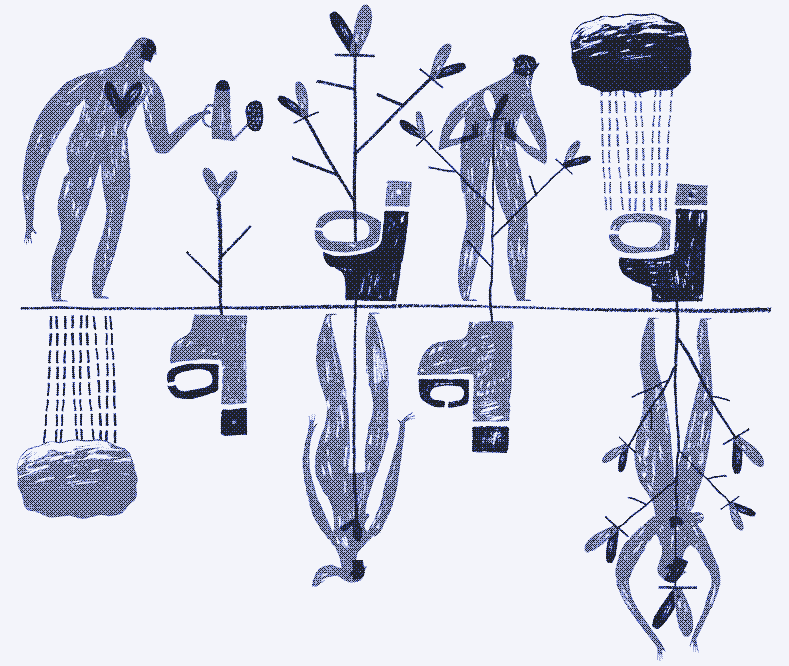
Flushing the water closet is handy, but it wreaks ecological havoc, deprives agricultural soils of essential nutrients and makes food production dependent on fossil fuels.
For 4,000 years, human excrements and urine were considered extremely valuable trade products in China, Korea and Japan. Human dung was transported over specially designed canal networks by boats.
Thanks to the application of human “waste” products as fertilizers to agricultural fields, the East managed to feed a large population without polluting their drinking water. Meanwhile, cities in medieval Europe turned into open sewers. The concept was modernized in late 19th century Holland, with Charles Liernur’s sophisticated vacuum sewer system.
Broken Cycle
The innocent looking water closet breaks up a natural cycle in our food supply. Basically, it turns extremely valuable resources into waste products. When we grow crops, we withdraw essential nutrients from the soil: potassium, nitrogen and phosphate, to name but the most important. During the greater part of human history, we recycled these nutrients through our bodies and returned them to the soil, via excreta, food trimmings and the burial of dead. Today, we flush them mostly into the sea (see the infographic below),
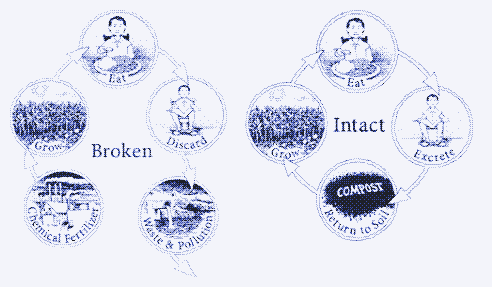
This is problematic and unsustainable, for three main reasons. To start, dumping sewage in rivers, lakes and seas kills fish and makes fresh water undrinkable. This can only be avoided by extending the water closet and the already very costly sewerage network with an equally expensive infrastructure of sewage stations (which does not completely eliminate the detrimental effect on water life).
Secondly, we need artificial fertilizers to keep our soil fertile. In 2008, almost 160 million tonnes of inorganic fertilizers were used worldwide (Source & Source). Without these, our agricultural soils would lose their fertility in just a few years time, followed by an inevitable collapse of food production and human population. A third problem is that the water closet logically consumes large quantities of fresh water to flush everything “away”.
Water closets are energy-intensive
Fresh water production, the construction and maintenance of sewers, the treatment of sewage (and sewage sludge), and the production of inorganic fertilizers are all energy-intensive processes. Nitrogen (which makes up more than half of total fertilizer consumption) is abundantly available in air, but to convert it to a useful form the gas has to be heated and pressurized. The energy for this (polluting) process is delivered by natural gas or (in China) by coal plants.
Potassium and phosphate have to be mined (up to depths of several thousands of feet) and transported. It takes more than 150 million tonnes of phosphate rock to produce our current yearly supply of 37 million tonnes of phosphate fertilizer, and 45 million tonnes of potash ore to produce 25 million tonnes of potassium fertilizer. Both operations are energy intensive and pollute the environment.
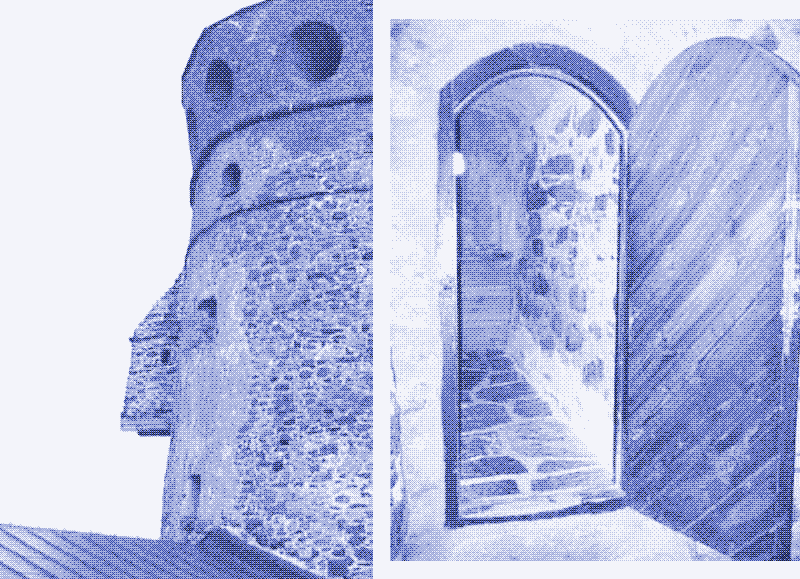
Moreover, while potassium is widely distributed and abundantly available (we have enough economically obtainable reserves to last 700 years at our current consumption rate), phosphorus is not. Ninety percent of global phosphate reserves are only found in a handful of countries, and economically recoverable reserves large enough to meet agricultural demand are estimated to last for only 30 to 100 years. Reserves are much larger if mining phosphates from the seabed is included, but this would be extremely energy-intensive, further deterioriating the sustainability of the food and sanitation system.
The only way to get nutrients from sea to land is via marine bird droppings - which is of course in very short supply - or by eating fish or seafood. However, once we have digested our fish and chips, the nutrients filter down to the sea via the sewer network.
A sign of civilization
The existence of the water closet and the accompanying sewer system is seldom questioned. It is viewed as an obvious technology and generally regarded as a sign of civilization - countries that do not have such a system today are considered retarded or backward. The reason for this is because we have been conditioned to believe that the water closet and the sewer system are the only alternatives to stench and disease.
We have been conditioned to believe that the water closet and the sewer system are the only alternatives to stench and disease
Following the demise of the Roman Empire (with its early sewers and water closets) and right up to the end of the nineteenth century, the concentrated and unorganised distribution of human excrements in groundwater, city canals and rivers brought recurrent deadly epidemics of cholera and typhoid fever throughout the western world. These were caused by drinking water contaminated with faeces.
People answered nature’s call on the streets or emptied their honey buckets in backyards, open courtyards, badly sealed cesspools or surface waters - methods that were not conducive to healthy living in densely populated cities. Water closet and sewer system have solved this, at least in the rich world, and nobody wants to go back to the miserable hygienic conditions of those times.
Chinese agriculture
However, as obvious as it seems to us today, the water closet is not the only possible answer to the problem of sanitation. There are other, much more sustainable methods to separate human waste from drink water supplies. To start with, the grim sanitary conditions of the Middle Ages and the early Industrial Revolution were a purely western phenomenon. At the turn of the twentieth century in the East, the water in Chinese rivers was safe to drink.
The Chinese were as numerous as the Americans and Europeans at the time, and they had large, densely populated cities, too. The difference was that they maintained an agricultural system that was based on human “waste” as a fertilizer. Stools and urine were collected with care and discipline, and transported over sometimes considerable distances. They were mixed with other organic waste, composted and then spread across the fields (illustration below).
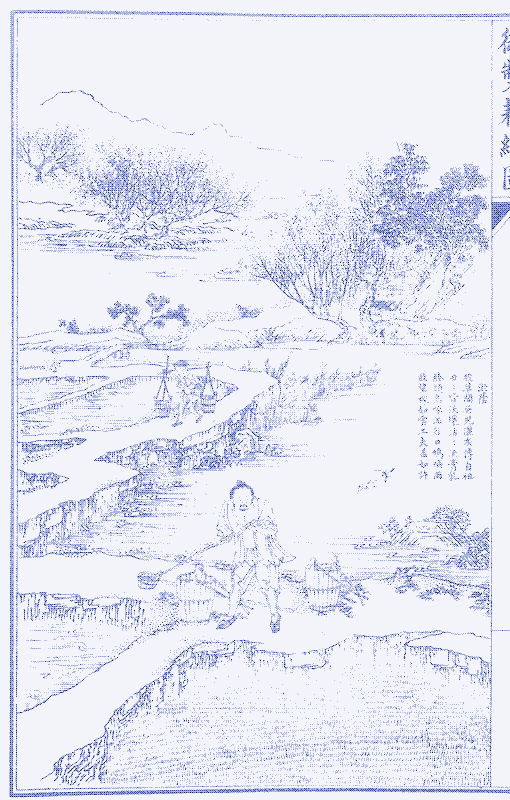
That’s killing two birds with one stone: no pollution of drinking water, and an agricultural system that could have lasted forever. In fact, it did last 4,000 years, which is considerably longer than even our most abundant resource - potassium, with 700 years of reserves - will allow.
The Chinese agricultural system, which was also applied in Korea and Japan, is extensively described in “Farmers of Forty Centuries”, a report of a study trip by the American soil scientist F.H. King. The book was published in 1911, around the time of the discovery of the Haber-Bosch process that would lead to the breakthrough of cheap artificial nitrogen fertilizer.
King devoted an entire chapter to the collection and use of human fertilizer by the Asians. Joseph Needham also gives an account of the method, in volume VI:2 of “Science and civilization in China”, citing various earlier sources. More recently, Duncan Brown talks about the Chinese system in his book “Feed or Feedback: Agriculture, Population Dynamics and the State of the Planet”!
Dung traders
When King visited China, the population was estimated at about 400 million adult inhabitants, compared to some 400 million inhabitants in Europe and 100 million inhabitants in the US. The stools and urine of those 400 million people were collected in terracotta jars, with air-tight seals. The matter was gathered from every home, from the tiny country villages to the great cities.
In some cities, special canal networks and boats were constructed for this purpose (picture below). This was the case in Hankow-Wuchang-Hanyang, for example, a city with almost 1.8 million inhabitants living in an area of only 6.5 square kilometres. You could thus argue that the Chinese did have a water carriage sewer network, though the difference to ours is stark.
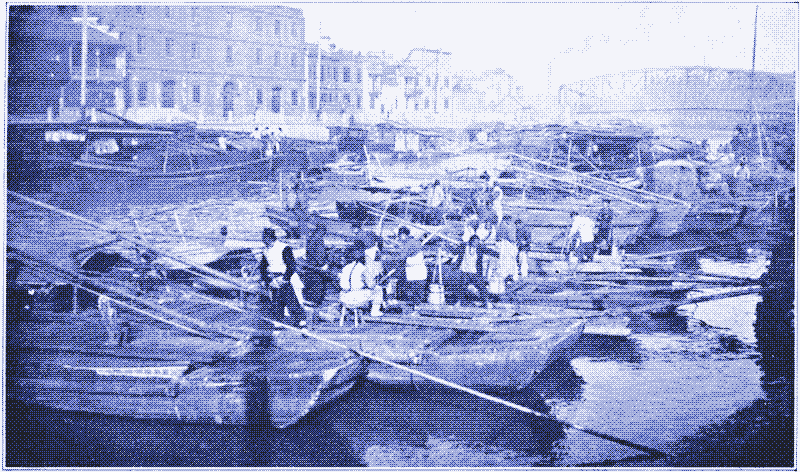
Around the time of King’s visit, every year in China more than 182,000,000 tonnes of human manure was collected in cities and villages – 450 kilogram (900 pounds) per person per year. This was good for a total of 1,160,000 tonnes of nitrogen, 376,000 tonnes of potassium and 150,000 tonnes of phosphate which was returned to the soil. In 1908 Japan, 23,850,295 tonnes of “humanure” was collected and given back to the soil.
Shanghai traded and distributed the yield of its inhabitants over a specially designed canal network using hundreds of boats (see map below), a trade that brought in 100,000s of dollars every year. Human manure was considered a valuable commodity. In 1908, a Chinese business man paid the city 31,000 dollar (this would be more than 700,000 dollars today) to obtain the right to remove 78,000 tonnes of humanure per year from a region of the city to sell it to the farmers on the countryside.
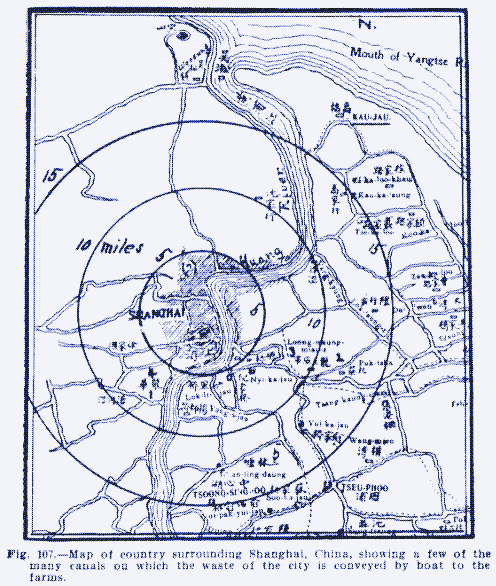
In Japan, which was much more urbanized than China, people paid less rent when they left their landlord better quality excrements. King describes loads of human dung taken from Tokyo and Yokahama “carried on the shoulders of men and on the backs of animals, but most commonly on strong carts drawn by men, bearing six to ten tightly covered wooden containers holding forty, sixty or more pounds each”. On the Japanese countryside, it was not unusual to see signs that invited passers-by to please answer nature’s call on site. The farmers used the product to manure their fields.
The practice of recycling human dung in Asian countries repelled some foreign visitors. The Portuguese explorer Fernam Mendez Pinto wrote in 1583:
“You must know that in this country there are many of such as make a trade of buying and selling mens Excrements, which is not so mean a commerce among them, but that there are many of them grow rich by it, and are held in good account. They which make a trade of buying it go up and down the streets with certain Clappers, like our Spittle men, whereby they give to understand what they desire without publishing of it otherwise to people, in regard the thing is filthy of itself; whereunto I will adde thus much, that this commodity is so much esteemed among them, and so great a trade driven of it, that into one sea port, sometimes there comes in one tyde two or three hundred Sayls laden with it.” (sic)
The 4,000 year old closed-loop system vanished with the arrival of artificial fertilizers, which were imported from the West during the first decades of the twentieth century. Today, China is the largest consumer of inorganic fertilizers with 28 percent of total world consumption. Asia as a whole now uses more than half of the world’s artificial fertilizer.
Night soil collection in Europe
The collection of human “waste” also occured in Europe, be it for a much shorter time and on a much smaller scale. The second half of the nineteenth century marked the end of a predominantly agricultural period in Europe; migration to the cities accelerated and the problem of sewage disposal got much worse.
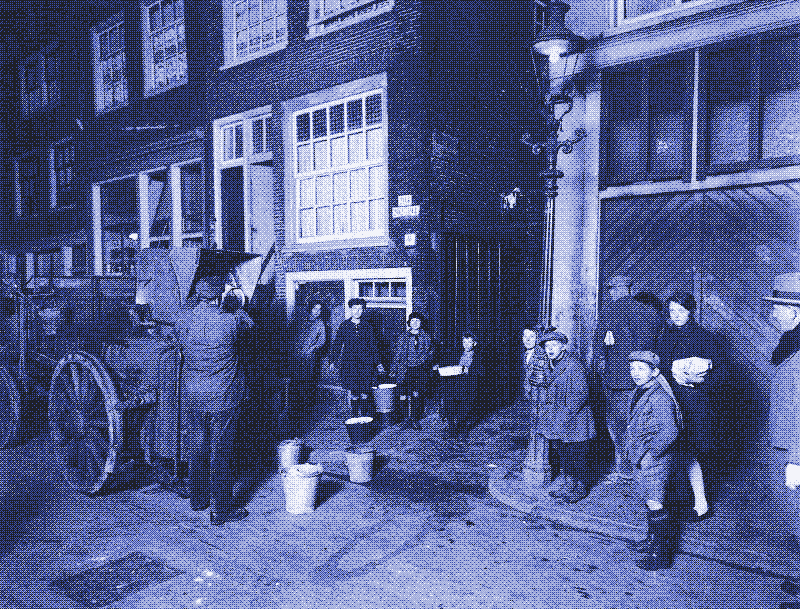
At the same time, health experts started to realize that cholera and typhoid fever were the consequences of drinking contaminated water. Since agriculture was increasingly short of animal manure, it appeared that both problems could be solved at the same time. The first system, which was set up in several countries and cities, is generally known as “night soil” collection and reminds of the Asian method.
Dung and urine were accumulated in movable wooden receptacles beneath the privy seat and mixed with earth, ashes or charcoal to prevent offensive odours. Night soil collectors came by at more or less regular intervals (mostly at night, hence the name) to pick up the merchandise.
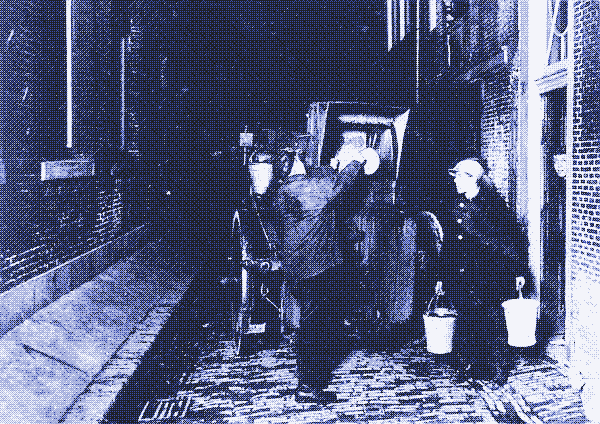
This happened either by emptying the full tubs into a cart and giving them back immediately (which meant the cleansing had to be done by the users), or by placing the full tubs in a wagon, switching them for fresh ones (which meant the cleansing had to be done by the scavengers). The empty tubs were replaced under the privy seat, and the cargo was transported via horse and cart to a collection point outside the city. There it was converted into compost for use in agriculture.
Unfortunately, the collection and transport of the waste was not as reliable, efficient and sanitary as was the case in China, Korea or Japan. All was good when air-tight containers were used, but this was not always done. When open carts were applied, the transport caused waste and foul smell (see the 19th century cartoon below, Sewage was spilled while carrying the tubs down the stairs and while emptying them into the carts. Moreover, the collection did not always happen that frequently, especially in poorer neighbourhoods.
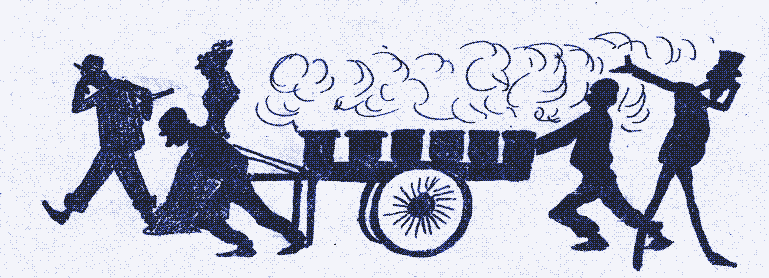
Nevertheless, the wooden tub system was an improvement over the comparitive disorder of nightsoil collection in Europe. Throughout the Middle Ages, so-called dung farmers gathered human and animal excrements from streets, backyards and cesspools and sold these to farmers who applied them to their fields. The problem was that these scavengers needed to collect enough dung before they could sell a cartload. Duncan Brown cites Cipolla, who describes the situation concisely:
“The most pathetically tragic aspect of this business was that of the people, whose poverty was so abject that they collected the manure they found in the streets where they kept it [at their homes] until they had accumulated a sufficient quantity to sell.”
There were exceptions, notably in Flanders, where an organized nightsoil collecting system that reminds of the Chinese method was set up as early as the Middle Ages. Around the town of Antwerp, the management of organic wastes (human excrements, dung of city horses, pigeon dung, canal mud and food scraps) had become a significant industry by the 16th century. By the 18th century there were great stores along the river the Schelde where the excrements from Dutch towns were transported by barge.
The vacuum sewers of Charles Liernur
A second collection method was pioneered by Dutch engineer Charles Liernur in 1866 (patent - pdf). His vacuum sewer system combined the comfort of today’s water carriage sewer network with the ecological and manurial advantages of the earlier scavenging methods. A closet inside every home was connected to an underground small diameter pipeline infrastructure, and the stools and urine immediately left the house following deposition.
The Liernur system combined the comfort of today’s water carriage sewer network with the ecological and manurial advantages of the earlier scavenging methods
The crucial difference with today’s technology, however, was that the Liernur system did not use water but atmospheric pressure as a transport medium. This meant that it avoided the dilution of the manure by the admixture of water, thus preserving its value as a fertilizer - which was Liernur’s explicit intention. On the other hand, the vacuum sewer system did away with the need for scavengers to visit every house, lugging around buckets of poo and pee, and disturbing everyone’s sleep. It was a clear improvement on the night soil systems, including the one used in Asia.
Dutch cities were equipped with the Liernur system: Leiden in 1871, Amsterdam in 1872 and Dordrecht in 1874. Initially, only a couple of thousand homes were connected to the vacuum sewer network, but in Amsterdam the system was expanded substantially. At the end of the nineteenth century, about 90,000 Amsterdam inhabitants were linked to the Liernur sewer network, some 20 percent of the population.
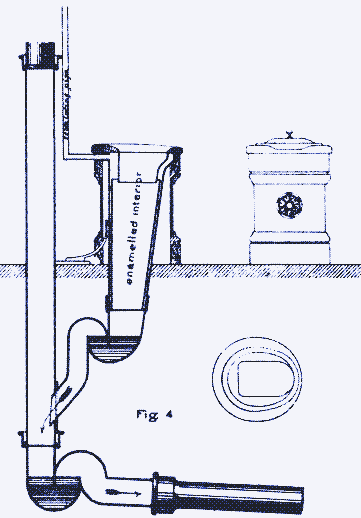
In Amsterdam and Leiden, the system remained in operation for almost 40 years. The Liernur system was also introduced on a smaller scale in Prague (Czech republic), Trouville sur Mer (France), Hanau (Germany) and Stansed (England). The system in Trouville, installed in 1892, was operated until 1987 (source, pdf). Today, the method is still being used in ships, trains and airplanes.
The French designed their own version of the Liernur system - the Berlier system. It was introduced in 1880 for a trial period in Lyon, where it successfully removed sewage over a distance of four kilometres (2.5 miles). In 1881, a five kilometre network was introduced for trial in a Paris neighbourhood. The French took the trials very seriously: the sewage was observed by placing glass pipes at various points. The Berlier system, which was technically superior to the Liernur system, worked flawlessly: the thousand soldiers in the barracks of Pépinière, where it was in operation, were the only troops in Paris that were not affected by a serious typhoid epidemic.
The arrival of the water closet
In spite of the technical success, the Berlier system never ascended beyond the experimental stage. The Dutch Health Advisory Board advised a general, national introduction of the Liernur system in 1873, following the successful operation in Amsterdam, but this did not happen either. Liernur designed plans for other cities in Europe (Paris, Berlin, Stockholm, Munchen, Stuttgart and Zurich) and in the US (Baltimore), but these were never realised.
There were several reasons why the pneumatic systems did not became the standard sewerage systems of today. Firstly, there was the arrival of the water closet and the waterworks. In the Netherlands, a growing number of people connected a water closet to the Liernur system, diluting the stools and urine in such a matter that their agricultural value declined considerably.
Even before this happened, the sale of the sewage for use as manure did not give the profits that were expected. Health experts advanced that profits should not be the first aim of a sanitary system, but the problem was that Liernur himself had stressed financial profits as an important advantage of his system. This had attracted investors, and they promptly left the technology behind when they started to lose money.
The installation of a vacuum sewer system is twice as cheap as the construction of a traditional sewer system
An important problem, not only in the Netherlands but throughout the western world, was the growing size of cities. Both the night soil system and the more sophisticated methods were eventually beaten by the logistics of maintaining the practice in huge cities supported by far away farms. The last blow for the vacuum sewer system was the appearance of inorganic fertilizers after a cheap production method was found in 1910. The shortage of fertilizers in agriculture was “solved”.
Because cities had started building water carriage systems for the discharge of storm drain water, the next logical step was to allow the discharge of sewage via the same network. Basically, this was a step backwards: excrements were again drained on surface waters, not necessarily in the immediate surroundings but a few miles further downstream. It took another 70 years before sewage stations became (relatively) common in the rich world.
Only three future possibilities
If we want to restore the natural cycle of our food supply, there are only three technological possibilities. We could develop a modern variant of the scavenging method using composting toilets, in which the stools are collected from individual homes together with other organic waste products. Urine could go to a separate tank that is emptied once a year by a tanker (this method exists in some Dutch and Swedish residential areas where people use so-called urine separation closets). Or, we could develop a modern variant of the Liernur or Berlier system, in which the sewage is collected automatically, but without the use of water.
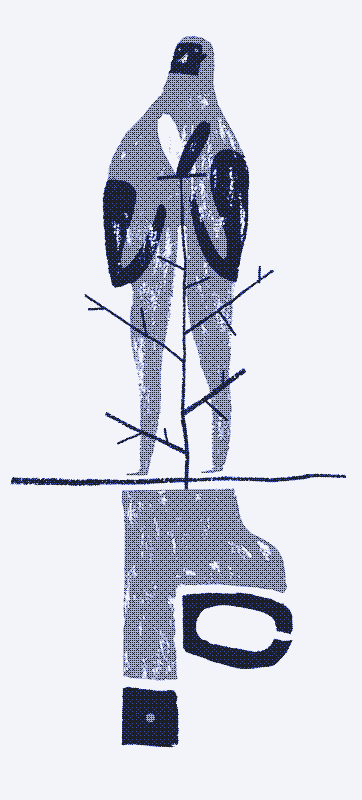
Vacuum sewer systems have found a limited application in some new housing estates since the 1960s and 1970s. A few hundred systems are in operation in the US, the UK, Australia, Germany, the Maledives, Southern Africa and the Middle East (overview). The installation of a vacuum sewer system is twice as cheap as the construction of a traditional sewer system. A vacuum system is also faster to construct and easier to maintain: it consists of much smaller diameter tubes that have to be laid less deep into the ground - a narrow trench in the road-surface suffices.
There is a third techno-fix, but it is many times more expensive than the other two: using the diluted sewage from our water carriage system as a fertilizer. Basically, this adds another layer of costly infrastructure and complexity on top of an already very costly and complex system. Diluted sewage not only has to be dried, but also purified. This is because sewage sludge does not only contain human waste but also many other (including toxic) waste resources, both from households and factories.
Interestingly, when we remove urine and excrements from the sewer system, we might as well eliminate the water carriage sewer system altogether, further obtaining substantial cost and energy savings. There are workable alternatives for the removal of storm water (basically reducing paved surface) and for the local treatment and re-use of grey water.
Composting
Human faeces and urine can only be used as a fertilizer following further treatment. This was an already known fact by early Chinese agricultural writers, who warned that untreated humanure could “burn and kill plants, rot the shoots and harm human hands and feet”. Today we know it also carries more severe health risks. F.H. King and Joseph Needham praise the composting efforts of the early Chinese, who often combined their privy with the family pigsty. However, Duncan Brown is more critical of their composting techniques. The health advantages that the Chinese gained by keeping their drinking water supplies clean, were partly offset by the transmission of diseases via food crops:
“Gastro-intestinal diseases were endemic throughout the region. In Korea and Japan, fluke diseases were common because of the practice of eating raw fish grown in ponds fertilized with human excrement. But those diseases could have been largely avoided with a better understanding of their nature and modes of transmission. If properly used, devices like the relatively modern sceptic tank, the more modern oxidation tank or the so-called composting toilet can avoid the danger of gastro-intestinal diseases previously associated with the use of human excrement as manure.”
A process of composting should always come first, and this can happen in two ways. The first - slow composting - is a a-do-it-ourselves-guide technique that is explained in the “Humanure Handbook”, an online practical guide by Joseph Jenkins (who coined the term ‘humanure’). Slow composting happens at low temperatures and takes about one year in a moderate climate. To be secure, most say the resulting (odourless) compost should only be used for growing crops where there is no direct contact between food and fertilizer (like fruit trees) and for inedible plants (flowers, houseplants).
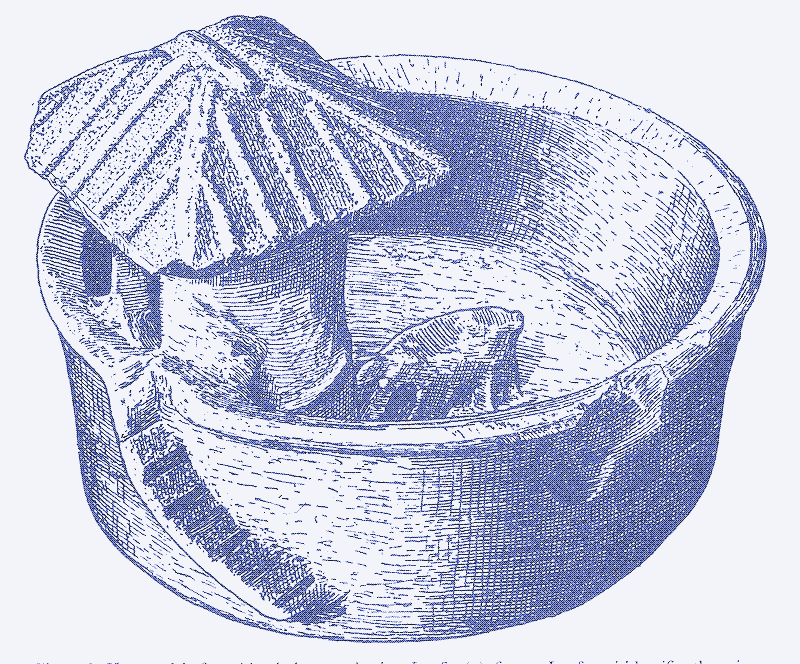
The second method is composting at high temperatures, which goes much faster and results in a fertilizer that can be applied to any kind of food crop. It is an industrial process, which is being applied successfully in several countries for a number of years. Interestingly, the first step of this process also generates electricity, further improving the sustainability of the whole system. Since 2005, a factory of the Dutch company Orgaworld composts diapers (from babies and elderly) together with many other kinds of organic waste. It is a high-tech process that takes about 6 weeks and results in a high-quality compost, free from pathogens, medicines and hormones. The company has also built two factories in Canada and is building plants in the UK.
Can we feed the world using humanure?
Can we produce enough natural fertilizer to substitute for synthetic nitrogen and mined potassium and phosphates? According to the figures collected by F.H. King, an adult person produces on average 1,135 grams of dung and urine each day. How much nitrogen, potassium and phosphates does this contain? That all depends on the diet.
From the China of 100 years ago, King cites different research results, ranging from 2.9 to 6 kilogram (5.8 to 12 pounds) of nitrogen per person per year, 0.9 to 2 kilogram (1.8 to 4 pounds) of potassium per person per year, and 0.4 to 1.5 kilogram (0.8 to 3 pounds) of phosphates per person per year.
If we recycle our own waste products, fertilizer production would automatically keep up with population growth
At present, the world population is estimated at 6,800,000,000 people. Let’s assume they all have a similar diet as the early 20th century Chinese and that the highest figures given by King more closely resemble today’s diets (reliable present-day figures are hard to find). This would mean that the total world population could produce 40.8 million tonnes of nitrogen, 14 million tonnes of potassium and 10.4 million of phosphates. Is that enough to eliminate the need for artificial fertilizers? At first sight, no. Today’s artificial fertilizer production is:
- 99.9 million tonnes of nitrogen, or more than double the amount that all people could possibly produce (40.8 million tonnes)
- 37 million tonnes of phosphates, almost 4 times the amount that all people could produce (14 million tonnes)
- 25.8 million tonnes of potassium, or more than 1.8 times the amount that all people could produce (10.4 million tonnes)
Livestock
However, we humans have “outsourced” a considerable amount of dung production to farm animals. A large amount of artificial fertilizer is used to produce livestock feed. These animals produce much more manure than all the people on the planet. Livestock excreta in 2004 were estimated to contain 125 million tonnes of nitrogen and 58 million tonnes of phosphates (there are no figures for potassium, which we will further ignore). That’s 3 times more nitrogen and 6 times more phosphates than can be found in humanure.
Animals played a minor role in the Chinese humanure-based agricultural economy, but the European farmers in the Middle Ages relied heavily upon livestock for manure, which was their main fertilizer. Animal manure was never wasted. Joseph Needham cites Fussell:
“European farmers of the 15th to 17th centuries, both high and low, had one main worry, manure. They dared not neglect any source of supply, however minute, for the success of every crop they grew depended largely on the amount they could accumulate for use. They were willing to undertake the labours of Hercules to build a sufficient dunghill”.
There are many good reasons to cut back on meat consumption, both for our health and for the environment - livestock production is also the main driver of deforestation (in its turn a major driver of soil degradation). However, if we don’t want to give up our high meat consumption, the least we should do is “to undertake the labours of Hercules to build a sufficient dunghill”.
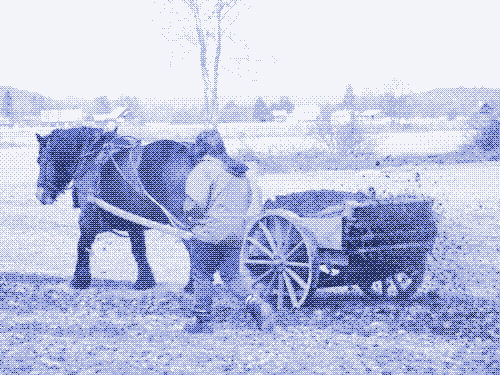
It would not only save us the effort to produce an ever increasing amount of artificial fertilizers, but it would also stop the devastating ecological consequences of dumping 91 million tonnes of nitrogen and 49 million tonnes of phosphates into the environment every year. Most of this is discharged without any treatment, illegally, or legally by overdosing it on fields near cities as a cost-effective waste management practice.
Food scraps & management techniques
There is another source of natural fertilizer material that is being wasted - food scraps. In this case, too, we turn a valuable resource into a waste product. Food scraps could be fed to animals like pigs, greatly improving the sustainability of meat production. But, instead, we feed them grain. Of all the food scraps produced in the US, only 3 percent is currently being recycled. The rest ends up in landfills, producing large amounts of greenhouse gases.
There is also a large potential to lower demand - one of the main problems with today’s fertilizer use is overconsumption. Artificial fertilizers are cheap and as a result farmers prefer to dose their crops with too much fertilizer, instead of risking not using enough and lowering their yields. This means that more nutrients are lost through soil erosion, runoff and leaching - which also pollutes groundwater, rivers and seas, because these nutrients do not pass through sewage stations.
The main problem is not that we produce inorganic fertilizers it’s that we don’t recycle them
Things were very different in the early Chinese agricultural system and during the European Middle Ages. There was never a surplus of fertilizer, so farmers applied it thoughtfully. With more careful techniques, today’s farmers could get the same yields with the use of much less fertilizer. The use of crop rotation, intercropping and green manure, all historically important techniques which are still being applied in today’s organic agriculture, could further reduce the demand for fertilizers.
Nutrient balance
Let’s digest all this information for a second. On the one hand, we have livestock and people, who together produce 166 million tonnes of nitrogen and 72 million tonnes of phosphates. Almost all of this is wasted, wreaking ecological havoc.
At the same time, our factories produce 99.9 million tonnes of artificial nitrogen fertilizer and 37 million tonnes of phosphates. A completely superfluous operation that further increases pollution and consumes vast amounts of energy. With the expected human (and livestock) population growth, not to mention the rise of energy crops to make biofuels, both biological and artificial production will rise even further, making everything only worse.
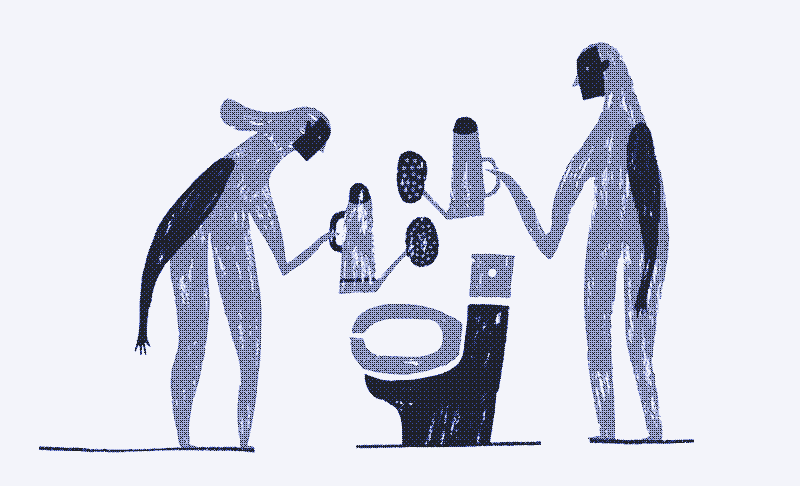
We have more than likely already passed the stage where humanity could be sustained without inorganic fertilizers. It is, after all, artificial fertilizers that caused the population boom of the 20th century. However, this should not be a problem. The large amounts of human and animal dung include nutrients which originate from inorganic fertilizers, since we all eat food that is largely grown by means of inorganic fertilizers. It is estimated that humans have already doubled the amount of nutrients in the global ecosystem. Thus, the main problem is not that we produce inorganic fertilizers it’s that we don’t recycle them.
Logistic challenge
Even if we only consider livestock manure, there is enough natural fertilizer available to sustain almost 7 billion people. There is also no taboo when it comes to utilising animal manure, so why don’t we use it? Nutrients recovered as animal manure and applied to agricultural lands were estimated globally at a mere 34 million tonnes of nitrogen (28 percent of total) and 8.8 million tonnes of phosphates (15 percent) in 1996. The amount wasted thus equals (for nitrogen) or surpasses (for phosphates) artificial fertilizer production.
This is the consequence of an industrial and intensive meat and dairy production system that is operating on a global scale. In many countries cattle eats fodder that is produced on the other side of the world. So, in order to close the loop, we would have to ship the manure back to where the fodder comes from. The FAO writes (pdf):
“Even if livestock is raised on the same continent as where its feed is grown, the scale and geographical concentration of industrial feedstock production causes gross imbalances that hamper manure recycling options. High labour and transport costs often limit the use of manure as organic fertilizer to the direct vicinity of the production facilities.”
If we recycle our own waste products, we have to ship them back from the place of food consumption to the place of food production
Of course, the same can be said of human manure. Just like livstock, humans are geographically concentrated in large cities with no farmland in sight. Just like livestock, we eat food that is often produced far away from where we live. This means that if we choose to collect humanure, we have to ship it back from the place of food consumption to the place of food production. Consequently, recycling nutrient elements would bring along a massive logistic system consisting of trucks, trains and ships transporting dung (or pipelines transporting sewage) all over the world.
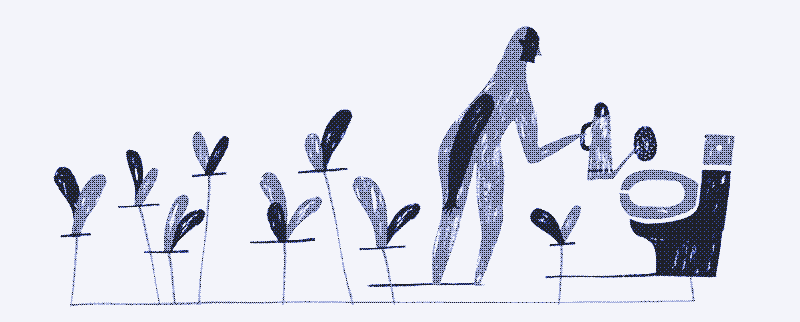
We are not saying that every ounce of dung should be sent back to the place where the food was grown—this is impossible and ridiculous. What counts is that there is a balance between import and export of nutrients. Countries that export food should also choose to import (other) food, instead of dung, yielding the same result and increasing the dietary variety. All we would essentially need is a sophisticated nutrient accounting system.
Decentralisation of the human population
The fundamental solution, of course, is to produce food more locally. This would not only do away with the shipping of manure, but also with the shipping of food. If livestock production would be geographically more diversified and mixed with cropland, all the animal manure could be used and artificial fertilizers would not be needed.
If cities were smaller and distributed more uniformly throughout farming country, the logistics of returning humanure to farmland would be greatly simplified. Of course, this ‘decentralisation’ of the human population goes against the notion that densely populated cities are more sustainable than a more uniformly distributed population. The challenge may not be to abandon Suburbia, but to make it more self-sufficient.
Many Thanks to Sietz Leeflang, inventor of the Nonolet (an urban composting toilet - building plans), who spent two years convincing me to write this epos on shit, and referred me to most documents listed below. Sietz also inspired me to write about oven stoves (which took considerably less effort).
Sources
- “Farmers of Forty Centuries”, F.H. King (1911)—dung recycling in china, korea and japan
- “Science and civilization in China”, Vol VI:2, Joseph Needham (1984)—idem
- “De geschiedenis van de techniek in Nederland - de wording van een moderne samenleving 1800 - 1890, deel 2”, H.W. Lindsen (1993)—the liernur system (in Dutch)
- “Feed or Feedback: Agriculture, Population Dynamics and the State of the Planet
”, Duncan Brown, 2003—the nutrient cycle and how to restore it (great book!)
- “The history of sanitary sewers” (website)—the liernur system and other early sewer systems
- “Proposed plan for a sewerage system, and for the disposal of sewage”, PDF, Samuel M. Gray (1884)—the technical options at the end of the 19th century
- “Humanure Handbook”, Joseph Jenkins (2005 - third edition)—diy
- “The nitrogen dilemma: is America fertilizing disaster?”, Tom Philpott, Grist (2010) - inorganic fertilizers
- “Livestock’s long shadow”, PDF, Food and Agriculture Organisation (2006) - figures of livestock dung production
- “Production and use of potassium”, PDF (1998)
- “Inorganic phosphorus and potassium production and reserves”, PDF, T.L. Roberts and W.M. Stewart, in “Better Crops” (2002)
- “Environmental aspects of phosphate and potash mining”, PDF, UNEP (2001)
- “Peak Phosphorus”, James Elser & Stuart White, Foreign Policy (2010)
- “Scientists warn of lack of vita phosphorus as biofuels raise demand”, Times Online, June 23, 2008
- “The voyages and adventures of Ferdinand Mendez Pinto, a Portugal, during his travels for the space of one and 20 years in the kingdom of Ethiopia, China, Tartaria, etcetera”, Ferdinand Mendez Pinto (1583).
Reactions
To make a comment, please send an e-mail to solar (at) lowtechmagazine (dot) com. Your e-mail address is not used for other purposes, and will be deleted after the comment is published. If you don’t want your real name to be published, sign the e-mail with the name you want to appear.
Reactions
Mat Redsell
Not a problem here at my place in port burwell ontario, see continuo.com as I have been composting our humanure for over three years now. Ofcourse if the municipality found out I would probably end up in jail! -mat
Greg
I remember my grandfather, who was an auto mechanic, telling about problems he had when they collected the “night soil” from his place. He would sometimes be given a leaky drum so he would replace it with one of his spare water tight drums he had around his garage. The men collecting the drums worked out what was happening so they started giving him the worst leaky drums. So one day he used clay to seal the bottom of the drum. When they tried to collect it they could hardly pick it up and asked my grandfather, “What have you been eating, batteries?” That was the last time he was given a leaky drum.
EdgeWiseInAnnArbor
Using fungal (stamets Mycelium Running) and bacterial (“living machine”) remediation of sewage for return as agricultural inputs is fine, but what about heavy metal accumulation? Even without local industrial inputs, airborne pollution would cause lead, mercury, etc. to accumulate in any feedback loop. I’ve yet to see a low tech remediation strategy for heavy metals, although it would be great to have one.
Anna
Great illustrations and chronicling of history! Most of the nutrients are in the liquid component alone. See Liquid Gold: The Lore & Logic of Using Urine to Grow Plants: http://www.liquidgoldbook.com
Nick Palmer
Truly inspiring. One thing - I thought a problem with reusing human manure/urine was heavy metals, hormones and pharmaceuticals build up?
Kris De Decker
Holy Shit!
“We are so ashamed of our excrement and that of all the other animals on earth that we pretend the stuff doesn’t exist.”
http://organictobe.org/2010/09/22/gene-logsdon-selling-a-book-that-has-no-name/
Alex
The low tech method of composing in the Humanure Handbook can be used on food crops, as the author demonstrates in his own garden. The method he users also creates temperatures up to 160*F. Where can I get information on this “high tech” industrial composting system?
jk
See also “Holy Shit”, Gene Logsdon’s latest.
http://www.amazon.com/Holy-Shit-Managing-Manure-Mankind/dp/1603582517
(I’m not the author or a shill for the publisher, I’ve just noticed that he came out with a book length treatise on this very subject.)
Mike in Buffalo
Truly great article about the insanity of our modern sewage and industrial agricultural fertilizer systems. However, for a post on low tech magazine, you took a nice swipe at one of the best low tech solutions to a problem I have come across by describing the diy humanure composting method of Joe Jenkins as slow and potentially unsafe if the compost is used where it will come in direct contact with the food.
According to the humanure handbook, which you cite in the article, composted humanure IS safe to use in direct contact with food. The author of the humanure handbook has been doing so for nearly 30 years with no ill health effects, using his family compost to grow vegetables. He has also had the compost tested a couple of times for diseases, worms, etc which came up clean.
Recyle pee and poo!
Tiptheplanet
Dung is biomass energy. It can be easily converted into fule like gas or alcohol. Also, it is much cheaper compared to other alternative energy sources. the production of biomass often means the restoration of waste land, such as deforested regions. However, you have to be concerned that it can contribute to pollution as well.
Uncle B
Humanure the last great free resource flow in America - San Antonio Texas does good with this! Bio-gassing then retrieving the sludge for topsoil and fertilizer works out, and yields consumer gas good enough to run cars on!
As the Peak Oil problems build, and the 200 million empty gas tanks in China produced this year alone are filled, and gasoline prices soar, Americans will overcome any discomforts they may have had about using sewage for good purposes economic realities will prevail.
A new sort of poverty brought to the West by burgeoning growth in Asian countries will sharpen our abilities to operate economically and shrewdly. In order to keep our very heads above the new Asian water levels we will have to make huge changes in our American Dream! Expect recycled humanure to be one of them, as well as huge Nuclear expansions, and shrinking of the McMansions to reasonable sustainable sizes - The big cars are already gone - a harbinger of what is to come! In the twinkling of and economic eye, the great fat-assed American will be declared out of style and a svelte, in shape, new American will become de rigure! Humanuring will be common-place and accepted by all as necessary for economic survival.
Today, as we speak, China feeds sewage to warm, shallow lakes, grows algae and Carp in them then feeds Carp pellets to game fish they sell to us at high prices! Humanure is just part of a food cycle.
When the American fiat dollar crashes, we will all repent but the haughty ruling class will die off! The reminents of America, much like the reminents of the former U.S.S.R. will be a sturdy survival orientated working class - the armpits of the nation, not the spoiled elite - they will hold huge amounts of stolen but now worthless fiat paper - this is why gold is booming - but to no avail - you cannot eat gold! you can so eat from a humanured garden, and compost will still have value, the same value it had before the crash, it will produce food.
William Bendsen
No, no, no. Collecting human and farm sewage and recycling it is not as easy as you describe, and I suspect you know this.
The massive amount of antibiotics used in farms, and the much smaller but much more diverse amount of medications used by humans, means that the shit and piss we collect is full of antibiotics and hormones. If used on soil, there’s a risk of killing the microbial soil life and a certainty of having chemically polluted farm produce, if used in water it plays hell with marine wildlife.
It either has to be disposed of*, or be used in closed systems.
The only sensible option I’ve heard of is to fertilize forests for firewood.
*Dumping it in the waterways is not disposal - I’m talking biological breakdown into N2, H2O and CO2
Jörgen Fidjeland
The conditions in soil are perfect for the breakdown of hormones and pharmaceuticals. In soil are water and air available, and a rich bacterial diversity take care of the biological conversion into harmless substances. In the western world these substances typically are discharged to water bodies where they may end up in drinking water. In water the breakdown of these substances go very slow, because of less air, and less density of microbiological activity.
Stuart
Did I miss something? The manure from animals could make up for the shortfall in human manure fertilizer? What about the fertilizer used in growing the grains which are fed to the animals? Can the animal manure make up for the inorganic fertilizer now being used to grow these grains? I read an interesting book titled “Just Enough” which describes life in Tokugawa Era Japan. Although horses and water buffaloes existed, the vast majority of labor in the countryside and the cities was performed by humans, because animals ate too much. The book waxes poetic about how “in-tune” the Tokugawa Era Japanese lived with their environment, contrasting this with the deforestation and frequent famines of previous eras. Of course, only 28 million Japanese lived during the Tokugawa Era! Today, there are 127 million. Oh well, at least that population is trending downward again. I think composting humanure is a great idea, but my wife would divorce me if I tried it.
jimmy
Oyser mushrooms for organic waste
And
Use hemp for the heavy metals, burn as fuel, use ash as fertiliser.
Allison Jack
Check out a new short film on an NGO composting humanure in Haiti: http://www.holycrapthefilm.com/thefilm/
David
Health threats related to traditional pigsty-privies are more complex than covered here and so merit further discussion:
Nemeth, David J. 1989. A study of the interactions of human, pig, and the human pork tapeworm. Anthrozoös 3(1): 4-13.
Evan
When I was stationed in Korea I noticed that wherever you went one was aways welcome to use the facilities. Like, using someone else’s bathroom just wasn’t a big deal. I’ve always wondered why that was, now I know.
ron
One of the biggest problems with affordable houseing is sewage.
I would like to produce bio gas for cooking and possibly powering a vehicle. I can only imagine the hassles if authorities figure out that you dont have a wasteful septic system.
Daniel
Ok, ignorance is not bliss. Antibiotics, and most toxic waste IS locked up during the composting process. Heavy metals are not a problem until you import them in the first place. What no one wants to face is everything we do needs to change. We all need to be responsible for waste reuse and food growing. It is our modern life style that has almost depleted the earth in just a couple centuries of selfish “progress”. I would even argue that almost none of what modern life provides is truly needed, or profitable. Our hollow stick box houses require huge amounts of energy just to make them livable; when cool tubes and many ancient ideas provide free heat and cooling. If you must take an advanced approach then it must work in real time using energy that comes from the sun; unlike oil which is plant energy buried in the flood. Cities dont have the right to eat unless their waste is returned to the ground that their food comes from. Anything else means depleting limited resources and killing everyone all for a life style that will never fulfill the deepest needs of humanity.
You know its funny how everyone will kill to get a house, clothes, amusement so they dont have to think about their life, fancy teckie toys and a car to go to work and be amused. In the end they want to retire some day to do what they want when they want without work. However, most of them only get cancer or old and die never having really lived. Yet, primitive cultures like ladakh have their nice large homes and clothes for free, work a few hours over 3 months and do what they want the rest of the year; never hurried. Even the amish have it far better than a person making a good wage. They have everything for free that the rest of us spend 20 to 50 years trying to pay off. There is a real big problem in our minds to believe all this that we know of as the good modern life is worth a humanure!
Philippe Chemin
Dear Kris De Decker,
Thank you very much for this article and all what you produce on your Web Site. That’s really great!
I would like to communicate you an article titled “Peak Soil”, you probably know, by Alice Friedmann [see http://www.rachel.org/?q=en/node/188/print]. It has been published in 2007 by Rachel’s Democracy and Health News [see http://www.rachel.org/].
Another article can also be of interest: “Eating Fossil Fuels” by Dale Allen Pfeiffer [see http://www.fromthewilderness.com/free/ww3/100303_eating_oil.html], published in 2004.
Congratulations, again.
Best regards,
Philippe Chemin
Gif sur Yvette
France
chad mcdonald
Wasn’t this trialled in Sydney, Australia. Industrial composting of waste. It may have been by Australian Native Landscapes in conjunction with thhe state goverment. Anyway it fell over, does anyone know why.
CW Hayford
You might want to see my 2007 post at Frog in a Well, “Pigs, Shit, and Chinese History.” http://www.froginawell.net/china/2007/01/pigs-shit-and-chinese-history-or-happy-year-of-the-pig/
I argue that, among other things, Chinese farmers were more interested in pigs for their manure than for their meat, with interesting consequences.
Yann kervennic
I am confused by the end paragraph. How can suburbia, the child of cheap oil, be sustained in the future. It is allready on the verge of explosion in many countries…
I recycle my pee in my garden and i get fabuous potato yield. I just pee in a jerrycan… I think the hippie toilet is my next step and I plan to use it for trees and not for vegetables.
I think it makes no sense to make a complicated connected system when such a simple dr toilette works.
We need to go back to the country side.
Any way there is no more job in town for us, apart from dealing drug or working in banks (which is about the same…).
travis
Kris, why did you put a Chinese grain tower in the composting section?
Cat Vann
Thank you for an eye opening article. Our modern world has many broken systems that thoughtful recycling would remedy.
It will take many good minds and methods to restore balance to our planet.
My biggest question is why do we not admit to seeing the elephant in the living room, ie, exponential population growth? It is a very low tech, cost effective solution called birth control.
Spiller
Also totally agree with previous commenter about population size. Dr Albert Bartlett also refers to this as the elephant in the room in one of his lectures. In my view many looming disasters are either created of exacerbated by the huge human population
ClockTower
Look up Amazonian/Brazilian terra preta, discussed in 1491: New Revelations of the Americas Before Columbus. One German professor used a modified form of “Terra Preta Sanitation” to bring contamination down to well within First World standards… No idea about heavy-metal pollution, though.
Elena Mali
The conclusion from human excrements to a self-sufficient suburbia, are complex elements brought to the point laid out perfectly together! It is a good food for thoughts on my master thesis (a suburban self-sufficient prototype settlement in combination with agriculture and industry) Thanks!
Just a note. I Think in the listing of the Tonnes that are produced annual in an-organic fertilizer and human produced fertilizer sth is interchanged. Potassium and phosphates are mixed up I guess, when comparing to the last preceding paragraph.
“…14 million tonnes of potassium and 10.4 million of phosphates.”
“37 million tonnes of phosphates, almost 4 times the amount that all people could produce (14 million tonnes)
25.8 million tonnes of potassium, or more than 1.8 times the amount that all people could produce (10.4 million tonnes)”
Mark Jacobson
See also “Low-Cost Technology Options for Sanitation” by Witold Rybczynski, Chongrak Polprasert and Michael McGarry. 1978 from the International Development Research Centre.
Joe Whoknows
Some 20+ years ago, I had a scanned copy (PDF format) of a scholarly paper written by some well-to-do English gentleman with a title something like “A Treatise on Night Soil Chamber”, or something similar.
The subject was the use of a “closet” used to contain night soil, and how it could be rendered “inoffensive” through the technique discussed in the paper.
He may not have known it, but he was describing a low-tech, antiquated composting toilet.
I found it originally online, while I was doing research and prep work for the rather uneventful Y2K event. If it still exists somewhere in my collection, it’s now lost on some misplaced or defunct hard-drive, and my attempts to find it again, online, have been fruitless.
Dave Bross
An oldie but a goody…from someone who has done it for a long time:
http://skrconline.net/content/images/stories/documents/Humanure_Handbook_all.pdf